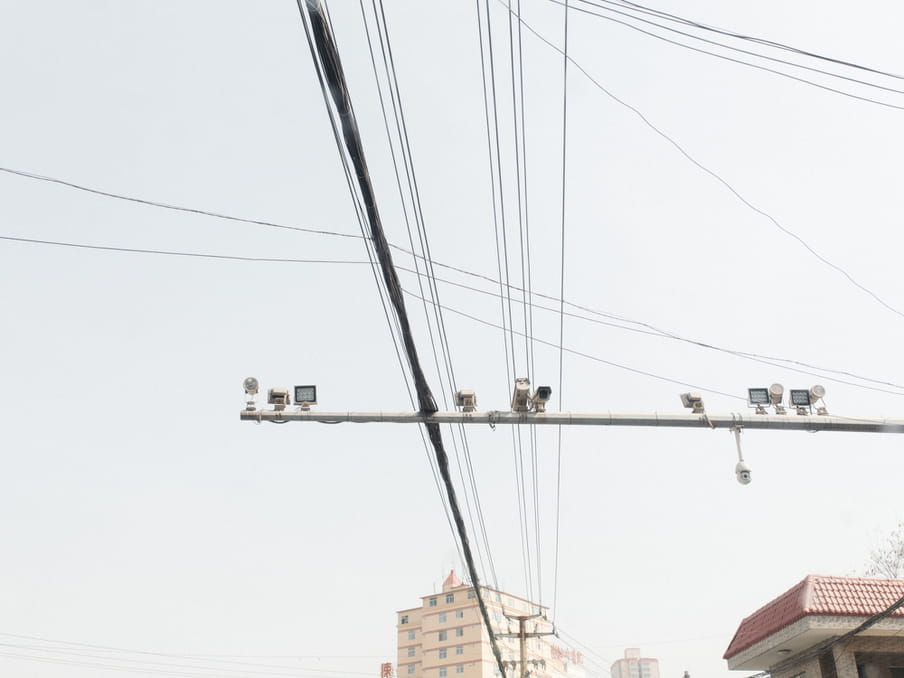In 1994, when Huawei was still a minor domestic player selling switches for telephone networks, its founder Ren Zhengfei met China’s leader Jiang Zemin. Ren, a former engineer with the People’s Liberation Army who went into consumer electronics, played the patriotic card, cautioning Jiang that "switching equipment technology was related to national security, and that a nation that did not have its own switching equipment was like one that lacked its own military". A quarter of a century later, other countries, led by the US, have belatedly grasped the wisdom of Ren’s remarks; the technology in question today is 5G, and it is Huawei’s equipment that they regard as a danger to their national security.
Huawei is an employee-owned firm with a highly unusual rotating leadership structure, a disdain for public markets – Ren Zhengfei finds them too "greedy" – and a corporate ethos that venerates Maoist values and emphasises indigenous innovation as a means of lessening China’s dependence on imperialist foreign firms.
The company operates networks in 170 countries and employs more than 194,000 people. It is among the world’s most important contributors to 5G technology, having shaped its development since 2009, internally and through its participation in various standardisation bodies. This summer it overtook Samsung as the world’s biggest seller of smartphones – and, thanks to the Kirin chip designed in-house, the premium items in its product line boast some of the most advanced artificial intelligence capabilities on the market.
Huawei’s remarkable success stems, in part, from its unyielding commitment to innovation: it has been spending more than 10% of its revenue on research and development – more than tech giants like Apple and Microsoft do.

The slogan of a new era: ‘designed in China, made in Vietnam’
What lies behind these figures? Huawei has great symbolic importance for China: it is a rare company that has succeeded in moving up from the relatively basic, highly commoditised, parts of the value chain to its very top, on a par with Apple or Samsung. Its trajectory is emblematic of the Chinese government’s broader aspirations for its tech industry. China was long confined to the role of a workshop assembling other countries’ products: the words "made in China; designed in California", found on the back of every Apple device, are a humiliating reminder of this. Huawei’s progress suggests a new era is dawning, in which that slogan could finally be upgraded to "designed in China, made in Vietnam".
Should this transformation occur in other Chinese companies, it would present a major challenge to US dominance of the global economy. Other countries firmly in the US orbit – Germany, Japan, the Asian tigers – have achieved explosive economic growth, but the process was enabled, in part, by US statecraft. US Americans cannot stomach the idea that China might pull off such a feat on its own, with its own geopolitical agenda, while the US is asleep at the wheel.
Today’s debate is about far more than China’s dominance in 5G, a technology which, at best, would give faster connections in more devices, connected and interconnected more of the time, and with more computation done locally, closer to the end user. The advertising hype distracts from the fact that there are still many hurdles to overcome before it is reliable and effective in industrial settings. For most ordinary consumers, it would mean no more than faster download speeds and, perhaps, the eventual arrival of the long-promised Internet of Things.
There are, of course, huge funds to be spent on network and device upgrades and, predictably, a fair amount of squabbling for market share. But Huawei and 5G are only a small part of a much larger geo-economic and geopolitical struggle in which China is trying to gain the upper hand over the US. This explains why Washington, which has no 5G champion of its own, is so agitated, while Europe, which has two, Nokia and Ericsson, is so calm.


Why Washington is targeting Huawei
Washington’s campaign against Chinese tech includes firms such as the state-owned ZTE, another important player in the 5G field, WeChat and TikTok and many other, lesser-known companies. But Huawei is its main target. The US views the company as the incarnation of an unscrupulous China whose actions in Hong Kong, Xinjiang and the South China Sea it regularly condemns and punishes with sanctions; Huawei is important enough to merit one of Donald Trump’s trademark nicknames, "the Spyway".
Washington sees Huawei as an arch-example of China’s rogue behaviour (widely mistaken for meritocratic market success) – stealing intellectual property, bullying partners and undercutting competitors with heavily discounted products subsidised by Beijing.
The US claims Huawei takes part in China’s "debt-trap diplomacy", building essential communication equipment for the global south that creates heavy dependency, like that already visible in China’s Belt and Road or New Silk Road Initiative. Worst of all, Huawei might be building backdoors into its products so that the Chinese regime can extend its spying apparatus and turn our smart, 5G-powered refrigerators and toasters against us.
Huawei’s critics usually invoke China’s latest national intelligence law, passed in 2017, which requires Chinese firms and citizens to collaborate with the government on request, as well as Beijing’s push to accelerate civil-military fusion in an effort to bring its tech sector and military closer together – a policy the Chinese in fact copied from the US. Huawei categorically denies all accusations of espionage, challenging the notion that the Chinese government would risk destroying its own international reputation and credibility.
The evidence produced to back up Washington’s claims is scarce to non-existent. However, this did not prevent the US from attempting to recruit some of its allies to its campaign, including the UK, France, Italy, the Netherlands and many eastern European states, dissuading them – if that’s the right word given the immense economic and diplomatic pressure from the US State Department and local embassies – from allowing Huawei to build their 5G networks.

It’s not just the US that is pitted against Huawei
The situation is not much better elsewhere: after intense lobbying by US Secretary of State Mike Pompeo, Chile had to exclude Huawei from its plans to build an undersea cable. In India, where Huawei has a massive presence, the government used the threat of excluding Huawei to retaliate against China after violent border skirmishes. There is no formal ban, but India is said to be looking at Reliance Industries, a domestic player, to fill in the gap.
The UK, despite its sluggishness around Brexit, has gone so far as to require mobile operators to remove all existing Huawei equipment from its network by 2027. This is remarkable, since the UK was crucial to Huawei’s early expansion into Europe, and its European headquarters are in London.
The EU has failed to agree a common policy on 5G, not least because the issue has been framed in terms of national security, an issue on which member states have sovereignty. Given the increasingly geopolitical dimension to technological competition among states, it would have been better to treat it as a matter of industrial policy and international relations, pouring resources into the creation of a single champion formed by Nokia and Ericsson, with generous state aid and a mandate to match Huawei’s spending on R&D.
Though the European commission, under pressure from France and Germany, has shown some willingness to abandon its fixation with competition and consider the broader geo-economic landscape, it’s unlikely to acquiesce to anything along these lines.
Germany remains the only big European state that has not yet announced its plans for 5G, but has promised to make a decision this autumn. German politicians, including Angela Merkel’s own party, are split on the issue; US diplomats in Berlin never miss a chance to point out the potentially high cost of their friendly stance towards Huawei.

There’s more to Huawei than ‘crony communism’
While Trumpian lore holds Huawei to be the epitome of Chinese "crony communism", there are alternative readings of its rise and significance. One of the most cogent is by Yun Wen. Ren Zhengfei, for all his bravado, Maoist quotes and occasional flirtations with nationalism, emerges as a strategic thinker with a firm grasp of the subtleties of geopolitics.
Zhengfei led Huawei into difficult markets – rural China in the 1990s, then many low-profit, high-risk markets in the global south – and used them as beachheads to expand into more profitable markets. Huawei and ZTE pegged their network-building projects to China’s overall expansion into Africa and Latin America, benefiting from the availability of Chinese state loans that were used by many local governments to finance such ambitious infrastructural projects.
In the case of Huawei, Yun writes, debt-trap diplomacy did not only have adverse effects. The rents that Huawei draws in the global south are modest compared to those it earns elsewhere, while the Maoist spirit of third world internationalism has not been entirely absent from its activities in the region, producing a sizeable cadre of well-trained local engineers and technicians.
The US has always been a high-risk market for Huawei, before Trump and even before Barack Obama. Since 2003, when it was sued for patent infringement by its then main US competitor Cisco, it has suffered a series of setbacks. First, it was banned from investing in or taking over US firms. Now, since Trump, it might not even be able to service existing customers or launch new products.
Given that the first salvoes in the US’s war on Huawei were fired 17 years ago, why has the situation escalated only recently? In late 2018, Ren Zhengfei’s daughter Meng Wangzhou, financial director of Huawei, was arrested in Canada, at the request of the US, while changing flights.
The Trump administration proceeded over the next two years to cripple Huawei, tightening sanctions every few months and asking the main federal government pension fund not to invest in index funds with exposure to Chinese tech stocks. Federal government contractors now have to prove that they are not doing any business with Huawei, while Chinese companies listed on US stock exchanges must open up their books and report any contacts with the Chinese government.


Can the US still spy on whoever it wants?
There are several economic and geopolitical factors behind the US offensive. On the geopolitical side, Yun Wen points out, clues can be found in the NSA (National Security Agency) documents leaked by Edward Snowden in 2013.
In 2010, the NSA broke into Huawei’s server, in an operation codenamed Shotgiant. The goal was to find any links Huawei might have to the People’s Liberation Army – judging by the absence of leaks to the media, they must have found nothing – and identify any vulnerabilities in its equipment, so the US intelligence apparatus could monitor Huawei’s government clients in places like Iran or Pakistan.
In Snowden’s leaked documents, the NSA was explicit about its real intentions: "Many of our targets communicate over Huawei-produced products. We want to make sure that we know how to exploit these products – we also want to ensure that we retain access to these communication lines." In February 2019, Guo Ping, then Huawei’s chairman by rotation, commented, "[Huawei] hampers US efforts to spy on whoever it wants."
Huawei’s dominance in 5G would be a great hindrance to US supremacy in intelligence, if only because the Chinese company would be less responsive to informal requests from the US intelligence community than its European competitors.


It’s not just about hardware – it’s also about patents
On the economic side, it is necessary to look beyond the material infrastructure that underpins 5G to the immaterial but intricate web of intellectual property rights that surrounds it. 5G is, above all, a standard. All networks and devices that rely on it have to conform to its specifications.
This involves using patented technologies; a modern smartphone, with wifi, touchscreen and processor may be covered by 250,000 patents (as of 2015; today’s figure is probably higher). The patents that must be used to conform to a technical standard like 5G are known as standard-essential patents, or SEPs; one estimate in 2013 put the number of SEPs needed for a mobile phone at 150,000.
The number of SEP holders in mobile technology has exploded from a handful in the early 1990s to more than 100 in the last decade. Patents imply licensing fees. The US chip maker Qualcomm, the winner of the 2G and several other important standards races, derives two-thirds of its revenue from China, most of that from Huawei.
Since 2001 Huawei itself has paid more than $6bn in royalties, 80% going to US firms like Qualcomm. Such outsized licensing fees have caused a lot of tension in China; Beijing imposed a $975m fine on Qualcomm for abusing its dominant position in 2015, and in 2018 Chinese anti-trust regulators blocked Qualcomm’s takeover of Dutch competitor NXP, on the grounds that it would further shrink the options available to the Chinese firms.
Today, things look somewhat different: Huawei now has one of the largest portfolios of 5G-related SEPs, a development very much in line with the shifting geographic distribution of SEPs, with the US and western Europe losing their dominant positions to Asian countries.
There is a sound economic rationale in China’s aspiration to become a net lender, rather than a net borrower, of patents. This policy has allowed China to close the immense gap in net royalty receipts that existed between it and the US: in 1998 US companies received 26.8 times as much in royalties as Chinese companies; by 2019 the difference was just 1.7 times.
Unsurprisingly, China has started to take a leading role in the world’s standardisation bodies: the heads of the International Electrotechnical Commission (IEC) and the International Telecommunications Union (ITU) are Chinese; the first Chinese president of the International Organization for Standardization (IOS) completed his three-year term in 2018.
The three schools of thought on the tech war with China
Where does this leave the US? Many in China thought Trump’s bullying would eventually result in an outcome similar to that of the US-Japan trade war in the 1980s, with some concessions leading to a stable agreement on how to move forward. However, this looks increasingly unlikely.
On the tech war with China, the Trump administration is split three ways. First there’s Trump himself, whose attacks on Chinese tech companies appear to be part of a broader strategy aimed at getting a better trade deal out of China.
If Trump were serious about containing China’s rise and its dominance in 5G, why would he let ZTE off the hook with a $1bn fine, but no sizeable damage? As a state-owned company, ZTE is a much better punching bag than Huawei. For Trump, Huawei is only a bargaining chip to be used in trade negotiation – and a campaign slogan.
Then, there are the China hawks, currently led by White House trade adviser Peter Navarro and US Trade Representative Robert Lighthizer. They see containing China’s rise as a vital imperative, and would not hesitate to strike Huawei even harder. They are the driving force behind proposals to extend the sanctions to an ever-wider array of Chinese companies.
Finally, there’s the military-industrial complex, who are the doves: until now, China has been a profitable market. In 2019 Huawei alone bought $19bn worth of components from US companies. Stopping US industry from doing business with Chinese clients helps America’s foreign competitors.

Bargaining chip but no talks?
While there was still a chance of the US-China trade deal signed in January being implemented in full, the doves, who include Treasury Secretary Steven Mnuchin, managed to soften the effects of the anti-China campaign led by Navarro and Lighthizer. But the deteriorating geopolitical situation and the onset of Covid-19, which Trump has blamed on China, have made full implementation unlikely. So Huawei risks remaining a bargaining chip in negotiations that will never take place.
Meanwhile, the retaliatory measures of the US against the Chinese tech sector have multiplied. In early August, Pompeo announced a global Clean Network programme aimed at creating another internet, stripped of the "malign influence" of the Chinese Communist Party. A few days later, Huawei was barred from using any technology that, directly or indirectly, involved US companies. This could be a serious problem: despite its massive R&D budget, army of engineers and emphasis on indigenous innovation, there are some components that Huawei can neither build in-house nor source domestically.
One such component is the Kirin chip, of great importance in artificial intelligence-based functionality, which is designed in China but fabricated by Taiwan’s TSMC. Over the last 15 years, China has been in a race with Silicon Valley and has made great strides in this field: it can even claim leadership in some domains, such as facial recognition.
But its main advantage to date has been the ability to harvest and process massive data sets, with which to train machine learning algorithms, a task undertaken by domestic tech giants but made possible by the cheap labour of millions of students at Chinese universities.
This approach was designed for a very different world, where China could count on an uninterrupted supply of high-performance components from factories in Taiwan or the US. The disruption of those supply chains puts China’s entire AI development at risk. In declaring war on Huawei, the US is perhaps hoping to deny the company access to its own semiconductors, made by its subsidiary HiSilicon, as much as to slow its advances in 5G.
The US has taken some provocative action in industrial policy, too; Congress has earmarked money to fund the development of open-architecture networks that might eventually replace those of Huawei and its competitors. It has also slated more public money (up to $10bn) to support US chipmakers through the CHIPS for America Act, currently being debated.
US politicians seem to have realised that this crucial moment of geopolitical competition is not the ideal time to hamper their own tech industry. And Silicon Valley is taking full advantage of this, with Mark Zuckerberg reportedly encouraging Trump to go after Chinese video-sharing app TikTok.
How Washington inadvertently got Beijing to act on creating an independent tech network
Overall, China’s response has been less assertive. It already has a number of well-funded initiatives to bolster its technological sovereignty, even if Covid-19 has put a dent in some of them – the 5G roll-out, for instance, is behind schedule.
In May, just a few days after the Trump administration announced yet another set of restrictions against Huawei and its suppliers, Xi Jinping unveiled a $1.4tn plan to bolster Chinese leadership in key technologies by 2025. The two most popular buzzwords are "de-Americanisation" (of the supply chain and of the technological stack) and "dual circulation", a new policy orientation that combines a renewed focus on the domestic market with the indigenous development of advanced technologies with potential for export.
With discussions on TikTok’s forthcoming sale of its US operations making good headway, China has expanded the list of technologies whose export it plans to control. These now include content-recommendation algorithms, speech modelling, and many other AI-related technologies. To counter the US’s Clean Network programme, it has also announced the launch of its own international network to counter US surveillance and espionage, the Global Data Security Initiative.
Huawei, for now, still stands strong. Anticipating tighter sanctions after the arrest of Ren’s daughter Meng Wangzhou, it began stockpiling inventory; current stocks could last it between six months and two years, though some components might be outdated by then. It also still has plenty of 5G network contracts. Knowing that its phones are going to lose access to updates from Google’s Android operating system as a consequence of Trump’s sanctions, it has been busy building its own, dubbed Harmony OS.
Whatever happens to Huawei in the near future, China, Russia and other countries have received the message loud and clear: achieving technological sovereignty is imperative. China had grasped the importance of this even before Trump launched his attack, which only strengthened the sense of urgency.
It would be ironic if the ultimate effect of the US’s war on Huawei was a much more technologically advanced and independent China, with a completely different supply chain that included no US companies. Paradoxically, it is Washington that has got Beijing to act upon one of Ren’s pithy sayings, that "without an independent national [tech] industry there can be no national independence".
This article first appeared in Le Monde diplomatique, November edition.
 About the images
For hundreds of years, the classical Silk Road has been a network of trade routes connecting central Asia with the western market. It was a symbol of economic and cultural exchange. In 2013, President Xi Jinping announced the development of a New Silk Road symbolising new opportunities for neighbouring areas and contemporary economic developments in China. The Belgian photographer Yuri Andries followed parts of this long route and portrayed both the practical extension and the spectacle around it.
About the images
For hundreds of years, the classical Silk Road has been a network of trade routes connecting central Asia with the western market. It was a symbol of economic and cultural exchange. In 2013, President Xi Jinping announced the development of a New Silk Road symbolising new opportunities for neighbouring areas and contemporary economic developments in China. The Belgian photographer Yuri Andries followed parts of this long route and portrayed both the practical extension and the spectacle around it.


